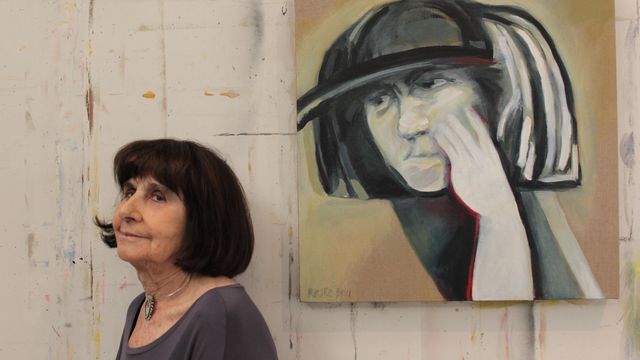
Roser Bru
Roser Bru was born in 1923 in Barcelona. As a consequence of the Spanish Civil War, her family fled to France in 1939 and departed that same year to Chile aboard the ship Winnipeg, thanks to the help of the poet Pablo Neruda. On arriving in Chile, Bru immediately enrolled in the Escuela de Bellas Artes in Santiago, where she studied painting, watercolor, and drawing until 1942. In 1947 she joined the Grupo de Estudiantes Plásticos, a group of artists who introduced informalism and abstraction to Chilean art and who would later come to be known as the Generación del 50. In 1957 she joined Taller 99, a print workshop founded by Nemesio Antúnez (1918–1993). A year later, in 1958, Bru returned to Barcelona for the first time in nineteen years. In that year she received the first of what would be numerous awards: Primer Premio de Dibujo at the Salón Oficial in Santiago.
The art historian Adriana Valdés has divided Bru's work into two phases. In the first period, from 1960 to 1973, her art was influenced by the informalist work of the Catalan artist Antoni Tàpies (1923–2012) and tended to be monumental, drawn with simple strokes. Between 1973 and 1988 her figures had less volume and were painted with diaphanous lines. Moved by political events transpiring in Chile and the disappearance of those who opposed the dictatorial regime of Augusto Pinochet, Bru began to incorporate names, numbers, and identification photographs into her work. She also experimented with figural representation by erasing, covering, and crossing out images with black lines or blotches and even removing her paintings from their frames and instead tacking the canvases to wooden frames. Despite this more experimental approach to painting, she has cited the work of Goya and Velázquez as a source of inspiration. She also utilizes female characters in her paintings, such as Frida Kahlo and Virginia Woolf, and metaphorical elements, such as the watermelon, to speak of the universality of the female condition.
Among her many honorifics, the most noteworthy are her recognition as Commander of the Order of Isabella the Catholic by King Juan Carlos I of Spain in 1995 and winner of the Premio Nacional de Artes Plásticas by the government of Chile in 2015, when she was ninety-two. Bru has exhibited primarily in Latin America and Spain; her works, however, can also be found in international collections, such as the Museum of Modern Art, New York; Brooklyn Museum; Museu de Arte Moderna do Rio de Janeiro; Museo de Arte Contemporáneo, Santiago; and Staatliche Museen, Berlin.
—Marcela Guerrero
Selected Solo Exhibitions
1977 Kafka y nosotros, Galería Cromo, Santiago
1986 Una mirada desde fuera, Palau de la Virreina, Barcelona
1996 Roser Bru: Retrospectiva, Museo Nacional de Bellas Artes, Santiago
2006 Roser Bru: Dues vides, Palau Moja, Barcelona
2009 Transcurso, 1999–2009, Galería Animal, Santiago
Selected Bibliography
Borràs, Maria Lluïsa, et al. Roser Bru. Santiago: Museo Nacional de Bellas Artes, 1996.
Pas, Annemieke van de. Roser Bru: Dues vides / Dos vidas. Barcelona: Generalitat de Catalunya, Departament de Cultura, 2006.
Roser Bru: El deterioro y la memoria. Madrid: Galería Aele, 1996.
El transcurso del tiempo: Roser Bru. Buenos Aires: Centro Cultural Borges, 2003.
Valdés, Adriana. Roser Bru. Santiago: Conarte, 1995.


